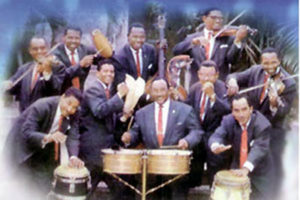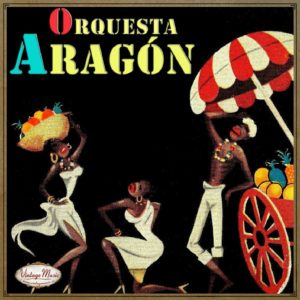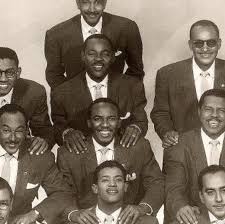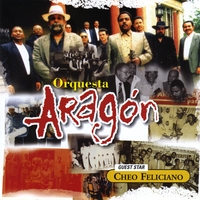 LA ORIGINAL ORQUESTA CUBANA “ARAGÓN DE CIENFUEGOS”. VIDEOS
LA ORIGINAL ORQUESTA CUBANA “ARAGÓN DE CIENFUEGOS”. VIDEOS
Orquesta Aragón es una banda musical cubana formada el 30 de septiembre de 1939 por Orestes Aragón Cantero en Cienfuegos, Cuba. La banda originalmente tenía el nombre de ‘Ritmica 39’, luego ‘Ritmica Aragón’ antes de establecerse en su forma final.
Aunque no crearon el Cha-cha-cha, fueron posiblemente la mejor charanga en Cuba durante las décadas de 1950 y 1960. Sus marcas comerciales incluyeron instrumentistas de clase alta que tocan en un estilo de conjunto ajustado e innovaciones rítmicas que mantuvieron su sonido actualizado. Con los años progresaron desde su inicio como danzoneria para tocar una variedad más amplia de estilos, danzón, luego cha-cha-cha, luego onda-cha, pachanga e fusiones de son. Todavía actúan hoy, con sede en La Habana.
Originalmente había ocho músicos: Orestes Aragon (contrabajo); Filiberto Depestre (primer violín); Hilario René González (segundo violín); Rufino Roque (piano); Efraín Loyola (flauta); Orestes Varona (timbales); Noelio Morejón (güiro); & Pablo Romay (voz). Con la enfermedad de Aragón en 1949, Rafael Lay Apesteguía se convirtió en líder y la banda entró en su segunda fase.
En 1950, la orquesta hizo su primer viaje a La Habana, y en 1953 Lay cambió el personal para adaptarlo a sus propias ideas. Fue alrededor de esta época cuando el danzón comenzó a desvanecerse, y el cha-cha-cha ganó popularidad.
Flautista era ahora Rolando Lozano y, más tarde, Richard Egües. Pepe Olmo comenzó a cantar junto con el director Rafael Lay. Pepe Palma también se uniría a la orquesta y sería su pianista durante décadas en adelante. La aparición de Richard Egües en la flauta de madera de 5 teclas fue significativa. Egües reemplazó a Rolando Lozano a principios de 1955 cuando Lozano fue a México. En agosto de 1955, Celso Valdés fue agregado al violín y, por lo tanto, se instaló la primera formación clásica de la Orquesta Aragón. La formación en este momento era Pepe Olmo y Rafael Lay (voz), Lay, Filiberto Depestre y Celso Valdés (violines), Pepe Palma (piano), José Beltrán (m. Bajo), Panchito Arbolaez (güiro), Orestes Varona ( timbales) y Guido Sarria (conga). Tanto Lay como Egües eran hábiles arreglistas y compositores.
Entre 1955 y 1958, la Orquesta Aragón lanzó cuatro LP para RCA, que se enumeran a continuación. Durante este tiempo, la Orquesta Aragón registró casi cien números para RCA, varios de los cuales nunca se han lanzado. Estos incluyen ‘Macuto’, ‘Por esta adoración’, ‘El trago’, ‘Gallo y gallina’ y ‘Cha Cha Cha navideño’ entre otros.
Durante 1958 y 1959 hubo un cambio y una adición a la Orquesta Aragón: Pedro Depestre reemplazó a su padre, Filiberto, por el violín y en enero de 1959 Rafael Bacallao fue agregado como cantante. Ahora el Aragón tenía tres voces y un sonido único. Bacallao también era bailarín y sus bailes durante sus espectáculos siempre atrajeron la atención y la aclamación del público. También en 1959, la Orquesta Aragón emitió el primero de ocho LP con su nueva línea en la etiqueta Discuba (subsidiaria de RCA Victor).
Alejandro Tómas Valdés era un violonchelista que se unió a la banda en la década de 1960 y también fue un gran bailarín por derecho propio con él creando el onda-cha como un baile que incluía la capoeira de Brasil, cuando la música que él también creó tenía un fuerte afro. percusión con los sonidos tradicionales de cha-cha-cha.
En 1982, Richard Egües se convirtió en el líder tras la muerte de Rafael Lay Apesteguía hasta 1984, cuando Rafael Lay Bravo se hizo cargo. Bajo los Laicos más jóvenes, la Orquesta se ha establecido como una verdadera institución de inspiración para otras Orquestas al tratar con los estilos musicales cubanos y afrocubanos. Durante el período revolucionario, Aragón ha viajado para dar presentaciones en más de treinta países.
Danzones de Ayer y de Hoy Discuba DCD 515
Me Voy para la Luna Discuba DCD 520
Danzones de Ayer y de Hoy Vol 2 Discuba DCD 532
1955: Cha Cha Cha RCA LP 1130
1956: That Cuban Cha Cha Cha RCA LP 1294
1957: The Heart of Havana RCA LP 1468
Cojale el Gusto a Cuba. Discuba DCD 502
Charangas y Pachangas Discuba DCD 555
Ja Ja Ja Pacha Discuba DCD 557
1957: Maracas, bongo y congas RCA LP 1609
Ultimos exitos de la Orquesta Aragón Discuba DCD 565
Mosaicos tropicales Discuba DCD 576
1978: Ritmo Cha-onda (Barbaro)
1992: La Cubanisima Orquesta Aragon (Egrem)
1997: Quien sabe, sabe (Egrem)
1999: La Charanga Eterna (Egrem)
2001: En Route (Egrem)
2002: Por Siempre Aragon (Egrem)
2009: The Lusafrica Years Lusafrica
 THE ORIGINAL CUBAN ORCHESTRA “ARAGÓN DE CIENFUEGOS”. VIDEOS.
THE ORIGINAL CUBAN ORCHESTRA “ARAGÓN DE CIENFUEGOS”. VIDEOS.
Orquesta Aragón is a Cuban musical band formed on 30 September 1939, by Orestes Aragón Cantero in Cienfuegos, Cuba. The band originally had the name Ritmica 39, then Ritmica Aragón before settling on its final form.
Though they did not create the Cha-cha-cha, they were arguably the best charanga in Cuba during the 1950s and 1960s. Their trade-marks included high-class instrumentalists playing in tight ensemble style, and rhythmical innovations which kept their sound up to date. Over the years they progressed from their start as a danzoneria to play a wider variety of styles, danzón, then cha-cha-cha, then onda-cha, pachanga and son fusions. They still perform today, based in Havana.
https://youtu.be/trTWU8F3pNA
Originally there were eight musicians: Orestes Aragon (double bass); Filiberto Depestre (first violin); Hilario René González (second violin); Rufino Roque (piano); Efraín Loyola (flute); Orestes Varona (timbales); Noelio Morejon (güiro); & Pablo Romay (vocals). With the illness of Aragón in 1949, Rafael Lay Apesteguía became a leader, and the band entered its second phase.
In 1950 the orchestra made its first journey to Havana, and in 1953 Lay changed the personnel to suit his own ideas. It was around this time that the danzón began to fade, and the cha-cha-cha to gain popularity. Flutist was now Rolando Lozano and, later, Richard Egües. Pepe Olmo began singing along with the director Rafael Lay. Pepe Palma was also to join the orchestra and be its Piano Player for decades onwards. The emergence of Richard Egües on the 5-key wooden flute was significant. Egües replaced Rolando Lozano at the beginning of 1955 when Lozano went to Mexico. In August 1955, Celso Valdés was added on violin and thus the first classic lineup of the Orquesta Aragon was in place. The line up at this time was Pepe Olmo and Rafael Lay (vocals), Lay, Filiberto Depestre and Celso Valdés (violins), Pepe Palma (piano), Jose Beltran (d. bass), Panchito Arbolaez (güiro), Orestes Varona (timbales) and Guido Sarria (conga). Both Lay and Egües were skilled arrangers and composers.
https://youtu.be/uEl9G_pSBT8
Between 1955 and 1958 the Orquesta Aragon released four LPs for RCA, listed below. During this time the Orquesta Aragon recorded nearly one hundred numbers for RCA, several of which have never been released. These include ‘Macuto’, ‘Por esta adoracion’, ‘El trago’, ‘Gallo y gallina’, and ‘Cha Cha Cha navideño’ among others.
During 1958 and 1959 there was one change and one addition to the Orquesta Aragon: Pedro Depestre replaced his father, Filiberto, on violin and in January 1959 Rafael Bacallao was added as a singer. Now the Aragon had three voices and a unique sound. Bacallao also was a dancer and his dances during their shows always garnered attention and public acclaim. Also in 1959, the Orquesta Aragon issued the first of eight LPs with their new line up on the Discuba label (RCA Victor subsidiary).
Alejandro Tómas Valdés was a cellist who joined the band in the 1960s and was also a great dancer of his own right with him creating the onda-cha as a dance which included Brazil’s capoeira, when the music that he also created was to feature heavy afro percussion with the traditional sounds of cha-cha-cha.
In 1982 Richard Egües became the leader on the death of Rafael Lay Apesteguía until 1984 when Rafael Lay Bravo took over. Under the younger Lay, the Orquesta has established itself as a true institution of inspiration for other Orquestas in dealing with Cuban and Afro-Cuban musical styles. During the revolutionary period, Aragón has traveled to give performances in over thirty countries.
(READ “THE ORIGINAL ORCHESTRA ARAGON DE CIENFUEGOS” PERFORMANCES IN THE SPANISH SECTION).
Agencies/ Wiki/ Various/ Internet Photos/ YouTube/ Arnoldo Varona/ www.TheCubanHistory.com
THE CUBAN HISTORY, HOLLYWOOD.








